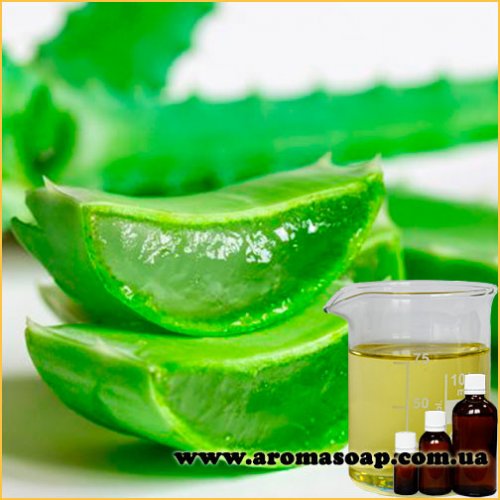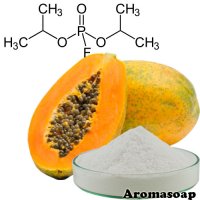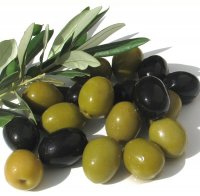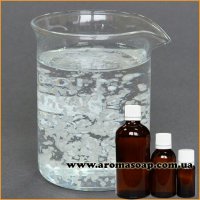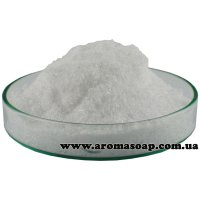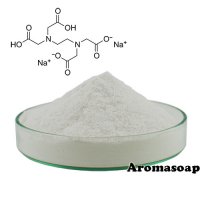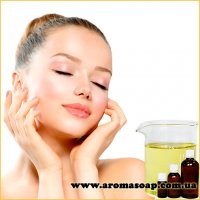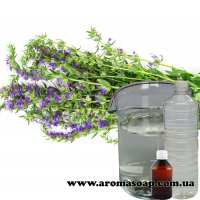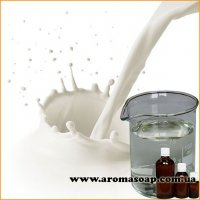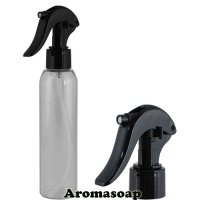Aloe Vera Juice 10:1 concentrate
Aloe vera juice 10:1 Source - succulent plant of the same name.
- INCI: Alcohol, Aqua, Aloe Vera Leaf, Extract . Appearance: clear or slightly cloudy liquid. Color ranges from yellow to dark brown (amber). Characteristic smell. Country of origin: Ukraine Dry residue: 1.0% Density: 0.982 (20°C) Temperature mode: do not heat Solubility: in water Raw materials for obtaining: aloe plant
History of Aloe Vera
There is hardly anyone who has not heard anything about aloe. Avicena, Galen, Dioscorides, and Pliny the Elder wrote about him.
The first mention of this “green doctor” appeared in the 4th century. BC. Traditionally they are associated with the king of Macedonia, Alexander.
It is believed that Aristotle asked Alexander to conquer the island of Socorta specifically for the sake of aloe. He complied with the request and established a monopoly on the cultivation of aloe vera.
Scientists and healers of antiquity knew the most common type of aloe - Aloe Vera. In translation it sounds like “true”, “real” aloe. This species was distributed in the Mediterranean. From here the Spaniards brought the plant to South America. Aloe has found its new home on the island of Barbados (“Aloe barbadensis”).
Today there are about 300 species of aloe. Tree aloe is widespread in our region. The popular name is "agave". Its biological name is "aloe arborescens".
It is similar to aloe vera, but more like a small tree rather than a bush. In agave, the leaves of the stem grow from different sides, while in aloe they are arranged in a circle. South Africa is considered the birthplace of tree aloe. In Europe, they learned about this species only in the 15th century.
Different types of aloe have different effects. Thus, Aloe Vera has a healing effect that is almost 10 times stronger than that of the tree type. The latter, however, is actively used in everyday life.
Juice, purees and tinctures are made from aloe. If you cut a leaf from an aloe, liquid will flow out of it - that very valuable aloe juice.
Aloe in Akkadian sounded like "siburu". Hence the Arabic “saber” - endurance. “Sabur” was the name given to condensed solid juice from aloe leaves. Sabur for Galen was a component of the “elixir of life.” The designation "Sabur" is still used today.
Use of aloe vera juice in cosmetics
In the field of cosmetology and home cosmetics, aloe vera is added to skin care products for moisturizing, cleansing, and sun protection.
Aloe is considered unique. Its leaves are 96% water. And the rest contains about 250 different substances:
Folic acid, niacin,
vitamins A, B1, B2, B6, C, E,
amino acids,
minerals,
mucopolysaccharides,
phytoncides,
salicylic acid.
This chemical composition makes aloe a real “healing” plant. The value of aloe vera lies in its ability to “launch” the human body.
Properties of aloe vera gel in cosmetics
Wound healing
Aloe vera copes well with fungi, microbes and even some viruses. It relieves complex inflammations (even with pus), heals wounds and burns on the skin and mucous membranes.
Due to its effectiveness, it is used in therapy, dentistry, surgery, gynecology, and ophthalmology.
Anti-inflammatory
Saponins in aloe vera gel explain its strong anti-inflammatory effect. They prevent the launch of inflammatory processes in the body. In addition to this, salicylic acid also has anti-inflammatory effects.
Cleansing
Aloe goes deep into the skin. 3-4 times deeper and faster than water. It cleanses pores, moisturizes the skin, and affects sebum production. Aloe vera juice is an excellent component of “makeup remover” products.
Sun protection
The substance aloin allows you to use aloe vera juice as sun protection. It is better known as an emetic and laxative. But it also protects against ultraviolet radiation, which is why it is added to sunscreen creams and gels.
Aloe vera juice is a natural UV filter. It will relieve discomfort after sun exposure and help recover from sunburn.
Matting
Aloe vera juice for skin is universal. For problem skin, this is a reliable friend. It will cleanse the pores and tighten them. Affects seboregulation. Leaves the overall appearance of the skin in good condition.
Anti-aging
Aloe vera juice promotes collagen synthesis and smoothes wrinkles. In addition, it prevents skin aging due to the influence of ultraviolet radiation.
Relieving irritation
Aloe is good to use after shaving for men or women after hair removal. Aloe juice will relieve irritation and redness of the skin, remove tightness and discomfort.
In addition, aloe will relieve itching from insect bites, so it is also added to repellent cosmetics.
Moisturizing
Aloe juice deeply moisturizes the scalp and body. It is often added to moisturizers. Aloe vera is especially beneficial for dry, sensitive skin. It is well absorbed by the skin and forms a protective film on the surface. It is used in products to care for the delicate area around the eyes.
Aloe vera juice is ideal for:
- “Anti-age” care for dehydrated, “tired” skin (creams, eye gels); Oily skin (mattifying effect with good pore cleansing); Hair care (shampoos, balms, moisturizing masks); Sun protection series (lotions and creams “before” and “after”); Men's and women's after-shave cosmetics; Children's cosmetics
Input percentage: 0.5-6%
- 0.5-1% children's cosmetics (shampoos, creams); 1-3% skin care after shaving, hair removal; 1-4% product with mattifying effect; 5% cleansing makeup remover; 6% sun protection series.
There are many benefits to using aloe vera concentrate. The input percentage is small, but effective. Up to 6% aloe vera concentrate or a 60% diluted solution is introduced. Introduced into the aqueous phase. In the hot method, the very last, along with other active ingredients.
Storage: in hermetically sealed packaging, in a dry, cool place (t<15°C). Do not store in direct sunlight. After opening the package, use immediately.
If the juice is not completely used, close the container tightly and refrigerate. The maximum shelf life, subject to proper temperature conditions and packaging, is up to six months.
Special instructions: not compatible with grapefruit extract. Do not use pure, be sure to dilute the concentrate.

